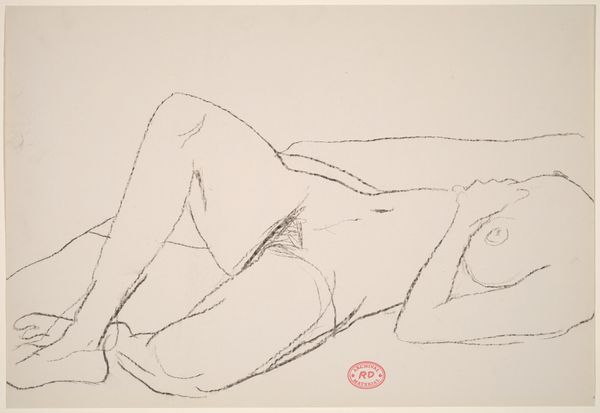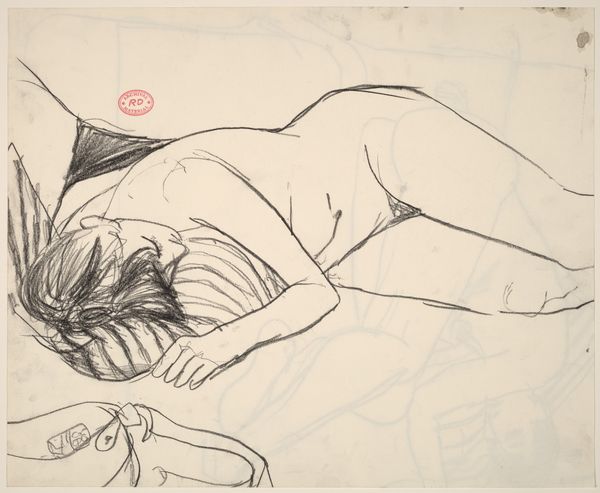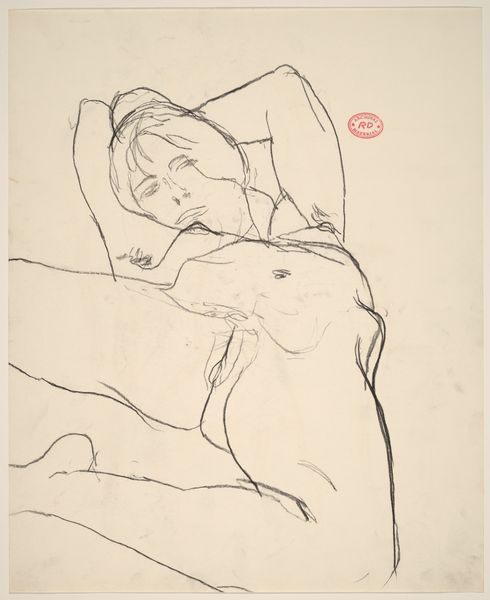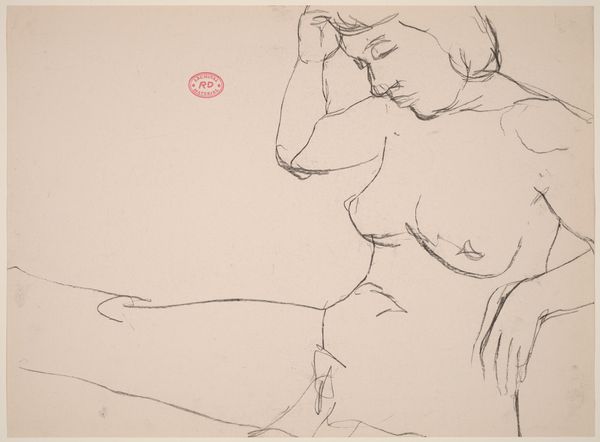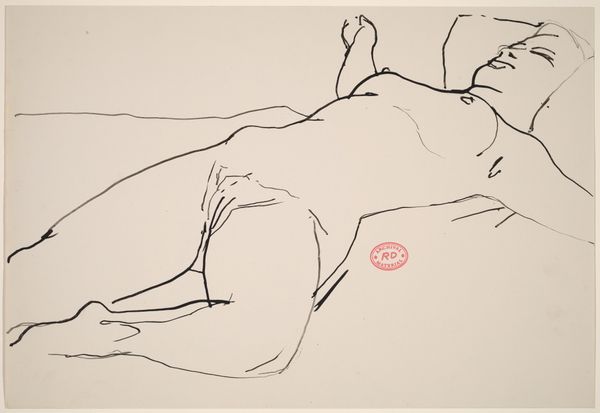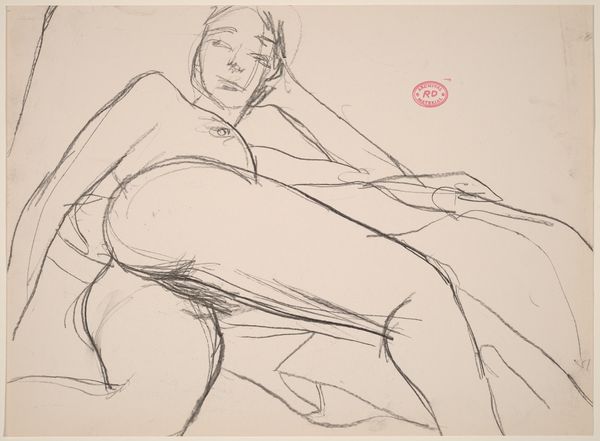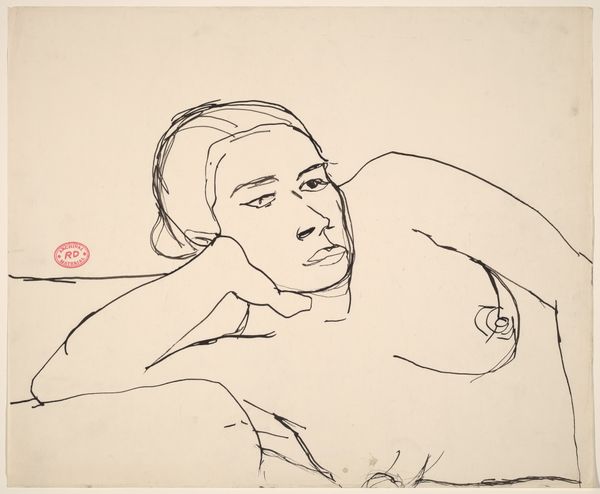![Untitled [reclining nude with her hands drawn to her forehead] by Richard Diebenkorn](/_next/image?url=https%3A%2F%2Fd2w8kbdekdi1gv.cloudfront.net%2FeyJidWNrZXQiOiAiYXJ0ZXJhLWltYWdlcy1idWNrZXQiLCAia2V5IjogImFydHdvcmtzLzUxYmU3OWEzLThjNDYtNDQ2NS1hNDQxLTUzN2E5Mzg5YjhmMC81MWJlNzlhMy04YzQ2LTQ0NjUtYTQ0MS01MzdhOTM4OWI4ZjBfZnVsbC5qcGciLCAiZWRpdHMiOiB7InJlc2l6ZSI6IHsid2lkdGgiOiAxOTIwLCAiaGVpZ2h0IjogMTkyMCwgImZpdCI6ICJpbnNpZGUifX19&w=3840&q=75)
Untitled [reclining nude with her hands drawn to her forehead] 1955 - 1967
0:00
0:00
drawing, pencil
#
drawing
#
figuration
#
bay-area-figurative-movement
#
pencil drawing
#
pencil
#
nude
Dimensions: overall: 31.8 x 43.2 cm (12 1/2 x 17 in.)
Copyright: National Gallery of Art: CC0 1.0
Editor: Here we have Richard Diebenkorn's "Untitled [reclining nude with her hands drawn to her forehead]," created sometime between 1955 and 1967. It's a delicate pencil drawing, and I'm struck by its apparent simplicity and the almost vulnerable pose of the figure. What do you see in this work? Curator: I’m interested in the labor embedded in this “simple” drawing. Think about the embodied work in representing a body and also about how we can explore its relation to the viewer's own body. This isn't just about Diebenkorn's artistic skill, but about how that skill is deployed in the act of representation. Editor: I see what you mean. It almost feels like a casual sketch, but those lines were very intentional and precise. Curator: Precisely. And those choices reflect the cultural context in which the artist worked. Why choose a pencil? What’s at stake when showing a "nude?" Consider the conditions under which such representations are both possible and acceptable and the consumption that the work enables. Editor: The use of a pencil, makes it appear to be part of an entire industry of imagery with its processes for sourcing and refinement... I am thinking now of where materials originate from, what labor goes into it, how this process ultimately affects art? Curator: Exactly. Where do the materials originate from? How are the bodies represented positioned and understood? What are the conditions of production that enables this type of artwork? The viewer has to be just as accountable as the artist in examining these relations. Editor: I hadn't considered all of those implications before. Now I am wondering about other works that have similar material implications and their ties to consumerism. Curator: It’s crucial to consider all these factors together for understanding how the social relations surrounding it impact our understanding of this work. Thanks for noticing the materiality in this representation. Editor: Thanks. That's definitely given me a fresh perspective to consider for future works!
Comments
No comments
Be the first to comment and join the conversation on the ultimate creative platform.
